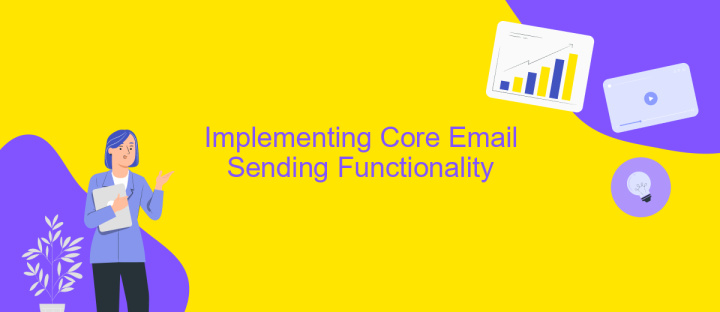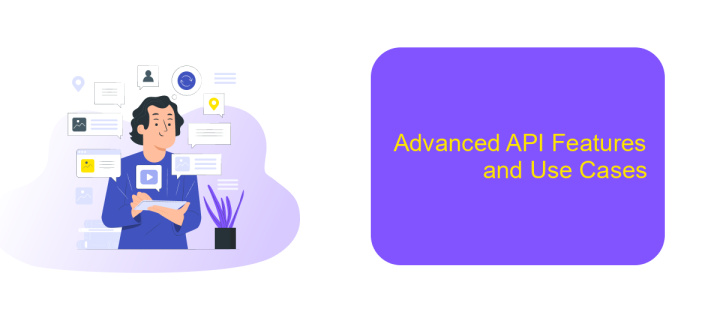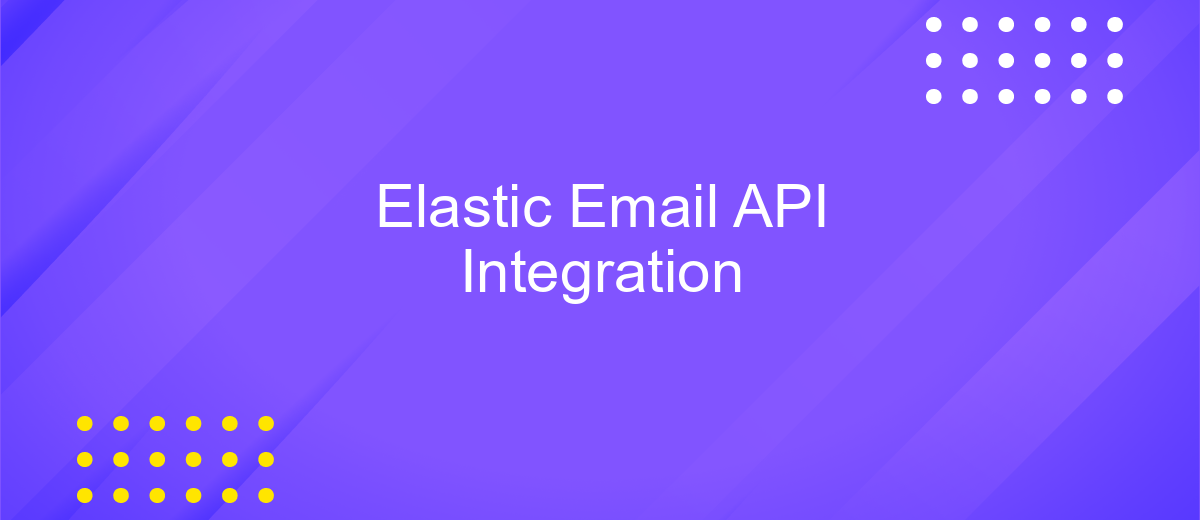Elastic Email API Integration
Integrating Elastic Email API into your application can significantly enhance your email communication capabilities, offering a seamless and efficient way to manage email marketing campaigns, transactional emails, and more. This powerful API provides robust features such as detailed analytics, customizable templates, and advanced automation, making it an ideal choice for developers looking to streamline their email processes and improve engagement with their audience.
Introduction to Elastic Email and its API
Elastic Email is a comprehensive email marketing platform that provides businesses with robust tools to manage their email campaigns effectively. Founded with the goal of simplifying email marketing, Elastic Email offers a range of features including email delivery, campaign management, and analytics. Its user-friendly interface and powerful capabilities make it a popular choice for businesses of all sizes looking to enhance their email marketing efforts.
- Seamless email delivery with high deliverability rates.
- Advanced analytics to track and optimize campaign performance.
- Customizable templates to create visually appealing emails.
- API integration for automated and scalable email solutions.
- Comprehensive support and resources for users.
The Elastic Email API is a powerful tool that allows developers to integrate email functionalities into their applications seamlessly. It provides a wide range of endpoints for managing contacts, sending emails, and accessing campaign statistics. With its RESTful architecture, the API ensures easy integration and scalability, enabling businesses to automate their email processes efficiently. Whether you're a developer looking to integrate email services into your app or a marketer aiming to streamline email campaigns, Elastic Email's API offers the flexibility and reliability needed to achieve your goals.
Setting up Your Elastic Email Account and API Key

To begin integrating Elastic Email into your application, you first need to set up your Elastic Email account. Visit the Elastic Email website and sign up for a new account if you haven't already. Once registered, log in to your dashboard. Here, you'll find a comprehensive overview of your account, including email statistics and settings. Navigate to the "Settings" section, where you can configure your account preferences, such as sender information and email templates. It's crucial to verify your email address to ensure seamless email delivery.
After setting up your account, the next step is to generate an API key, which is essential for connecting your application to Elastic Email. In the dashboard, go to the "API" section and click on "Create API Key." Choose the permissions you need, such as sending emails or accessing your account data, and generate the key. Be sure to keep this key secure, as it grants access to your Elastic Email account. For a streamlined integration process, consider using ApiX-Drive, a service that simplifies connecting Elastic Email with other applications without requiring extensive coding knowledge.
Implementing Core Email Sending Functionality

Integrating the core email sending functionality using Elastic Email API is a straightforward process that enables seamless communication with your audience. First, ensure that you have an active Elastic Email account and have generated an API key for authentication purposes. This key is essential for securely connecting your application to the Elastic Email platform.
- Install the Elastic Email API client library for your programming language. This can typically be done using a package manager like npm for Node.js or pip for Python.
- Initialize the API client with your API key. This step authenticates your application and allows it to interact with the Elastic Email services.
- Create a function to construct your email message. This function should include parameters for the recipient's email address, subject line, and message body.
- Use the API client's send email function to dispatch your email. Ensure you handle any potential errors or exceptions to maintain robust functionality.
By following these steps, you can effectively integrate Elastic Email's core email sending capabilities into your application. This integration not only facilitates efficient communication but also offers scalability and reliability, ensuring your emails reach their intended recipients promptly.
Advanced API Features and Use Cases

Elastic Email API offers a range of advanced features that empower developers to enhance their email marketing strategies. By leveraging these capabilities, businesses can streamline their email operations, improve deliverability, and gain deeper insights into their campaigns. The API's flexibility allows for seamless integration with various platforms, enabling customized email solutions tailored to specific needs.
One of the standout features of the Elastic Email API is its robust analytics and reporting tools. These tools provide real-time data on email performance, helping businesses make informed decisions. Additionally, the API supports advanced segmentation, allowing for targeted email campaigns based on user behavior and preferences. This level of personalization can significantly increase engagement and conversion rates.
- Real-time analytics for tracking email campaign performance.
- Advanced segmentation for targeted and personalized emails.
- Automated workflows to streamline email marketing processes.
- Comprehensive bounce and complaint management for maintaining list hygiene.
These advanced features open up a plethora of use cases, from automated transactional emails to complex marketing campaigns. By integrating Elastic Email API, businesses can optimize their communication strategies, ensuring that the right message reaches the right audience at the right time. This not only enhances customer satisfaction but also drives business growth.
Troubleshooting and Best Practices
When integrating the Elastic Email API, common issues may arise, such as authentication errors or failed email deliveries. To troubleshoot these, first ensure your API key is correctly configured and has the necessary permissions. Double-check endpoint URLs and request formats to confirm they match the API documentation. For email delivery issues, review the status codes and error messages returned by the API to identify the root cause. Additionally, monitor your email sending limits and ensure compliance with Elastic Email's policies to prevent account suspension.
For best practices, maintain a robust logging system to track API requests and responses, which aids in diagnosing issues quickly. Implement retries with exponential backoff for handling transient errors. Consider using ApiX-Drive for seamless integration, as it offers an intuitive interface to connect Elastic Email with other platforms, reducing manual setup errors. Regularly update your integration to align with the latest API changes and security protocols. Lastly, conduct routine tests to ensure your integration remains reliable and efficient.
FAQ
What is Elastic Email API, and how can I use it?
How do I authenticate my requests with Elastic Email API?
Can I send bulk emails using Elastic Email API?
How can I track the performance of my emails sent through Elastic Email API?
Is there a way to automate Elastic Email API integration without coding?
Strive to take your business to the next level, achieve your goals faster and more efficiently? Apix-Drive is your reliable assistant for these tasks. An online service and application connector will help you automate key business processes and get rid of the routine. You and your employees will free up time for important core tasks. Try Apix-Drive features for free to see the effectiveness of the online connector for yourself.

